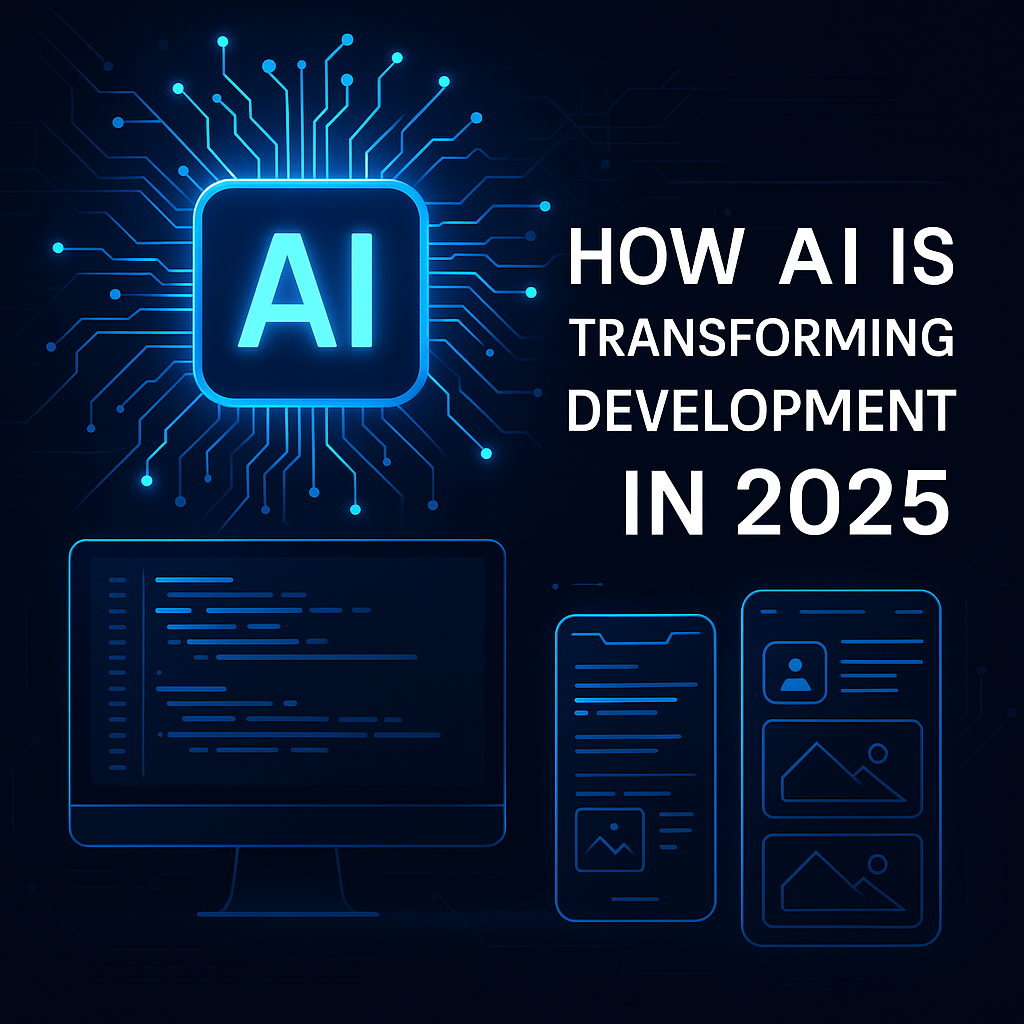
In 2025, Artificial Intelligence (AI) continues to revolutionize the landscape of web and mobile application development. From automating backend processes to delivering personalized user experiences, AI is not just a buzzword—it’s a powerful tool shaping the digital world.
1. Smarter Web Design
AI-powered design tools can now analyze user behavior to suggest optimized UI/UX elements. These intelligent systems reduce the time spent on wireframing and prototyping by auto-generating layouts that align with user intent and engagement data.
2. Enhanced Security Protocols
Machine learning algorithms detect unusual user behavior, helping developers secure applications against data breaches and cyber threats in real-time.
3. Automated Code Generation
Modern AI platforms can write code snippets based on user input or design mockups, enabling faster and more accurate development workflows.
4. Voice and Image Recognition
Voice-based search and image processing are now standard features in mobile apps, thanks to advancements in Natural Language Processing (NLP) and Computer Vision.
AI chatbots are transforming customer service by providing 24/7 support, increasing engagement, and boosting conversions. Here’s how to integrate one into your website:
Step 1: Define Your Chatbot’s Role
Determine whether your bot will answer FAQs, assist with sales, or provide technical support.
Step 2: Choose the Right Platform
Popular chatbot platforms include Dialogflow, Microsoft Bot Framework, and Tidio. Select one that suits your technical needs and budget.
Step 3: Design User Flows
Create conversational scripts and flows based on common customer queries to improve interaction quality.
Step 4: Integrate with Your Website
Use the chatbot platform’s code snippet or plugin to embed the bot into your website, especially on high-traffic pages like home, product, or contact.
Step 5: Train and Monitor
Continuously train the bot using new data and monitor its performance through analytics dashboards to refine its capabilities.
Machine Learning (ML) personalizes digital experiences by analyzing user data and predicting behaviors. Here’s how ML enhances UX:
1. Personalized Content
ML algorithms recommend content, products, or services based on individual user preferences and browsing history.
2. Dynamic Interfaces
Applications adapt their interface based on user behavior, showing relevant features or content to each unique visitor.
3. Predictive Search
ML enhances search functionality by predicting queries and displaying relevant results before the user finishes typing.
4. Behavior-Based Alerts
Apps can send intelligent notifications or alerts based on real-time user actions, increasing engagement without being intrusive.
Conclusion:
As AI and ML technologies continue to evolve, their integration into web and app development becomes not only beneficial but essential. Businesses that adopt these innovations early position themselves for enhanced efficiency, superior user experience, and long-term success.
© 2025 Created with BroCodeTechSol.com | All Rights reserved.
Chat Now!